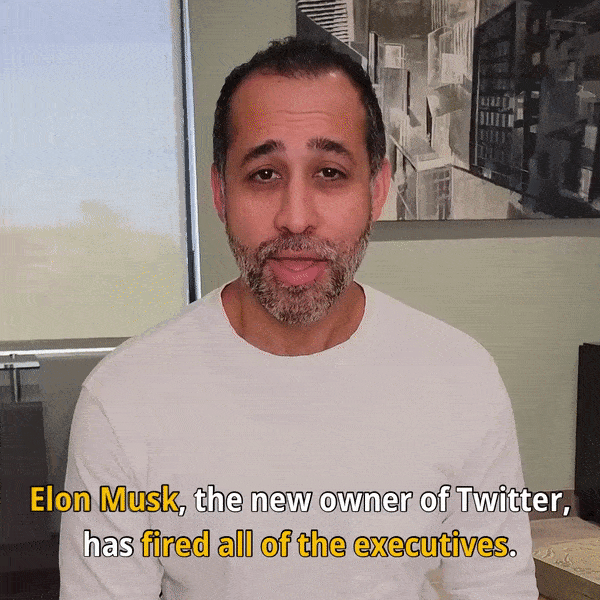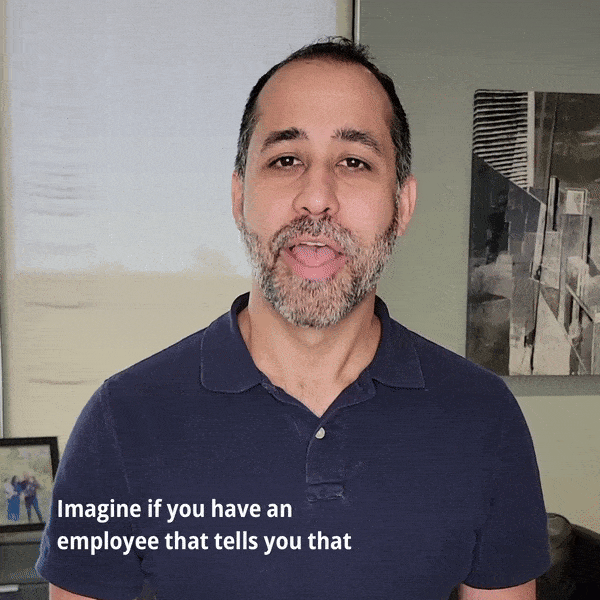I once worked for a company that had been rumored, maybe, at some distant time in the future, possibly, but not certainly, perhaps in connection with a potential sale or not, to be tentatively considering relocating to another very fine state, which everyone would certainly love. Then one Monday morning, we were told to stop everything and go to the conference room.
I looked at a coworker and said, “I wish I’d put on lipstick.”
He said, “I wish I’d put on Depends.”
Let’s just say that the morning could have gone better. It could also have gone worse. At least it didn’t involve the kind of public bloodletting that has just unfolded at The New Republic.
Business sales happen. They needn’t necessarily involve the destruction of hundred-year-old enterprises or massive personal disruption, complete with tears and public recriminations. From the boss’s perspective, communication can make or break the deal. From the worker’s perspective, it may be time to re-think how to work for a living. Both sides may need to move beyond the adversarial relationship implied by the doctrine of at-will employment.
Let’s begin with the boss, since that is where the decision to sell happens.
Selling the Company was Always Part of the Plan
If it wasn’t, it probably should have been since succession planning should start early. But let’s suppose the time has come, and tentative negotiations with a buyer are under way. It’s an asset sale of an ongoing concern, and for the buyer a big part of the value of the business is the current staff, or most of them. How can the seller preserve that value, and what are her legal obligations to employees?
Legal Obligations to Employees. In an asset deal, the seller ends the employment relationship with all employees. In non-technical terms, that is a 100 percent layoff. That will trigger a number of obligations, including the payout of accrued sick leave, vacation pay and unemployment compensation for employees who do not go over to the seller.
It will also trigger a number of state and federal notice requirements, including those that deal with continued healthcare coverage. Most of these do not have to be given before termination, but for employers who are large enough to be covered by the Worker Adjustment and Retraining and Notification Act, written notice must be given 60 days prior to the layoff. In California this affects employers with 75 or more full or part-time employees, which is lower than the federal threshold.
Any additional legal obligations of the seller to contract employees will be determined by the terms of the contract. Current key employees may want to negotiate contracts with the buyer at the time of the sale. These can cover a wide variety of issues beyond continued employment, including carried over seniority rights or waiver of eligibility periods for certain benefits like bonuses. This takes us to the issue of communication.
Breaking the News. The worst of all possible alternatives is to let the rumor mill run. With one foot out the door, your employees will cease to be productive and spend all their time looking for another job. Your competitors will begin to circle like vultures, the value of your business could tank and your buyer may back out.
On the other hand, the conventional wisdom is that, within legal limits, it is better to break the news later rather than sooner. That is, except for key employees with whom you may want to have a confidential conversation about an employment contract with the buyer to take effect immediately after the sale.
That’s risky. If the rumor mill forces your hand, you may choose to go ahead and discuss the possible sale. If you have been thinking about retiring, it may not be a surprise to your employees anyway, and it may give you the opportunity to provide reassurances about the likelihood of continued employment. If your business has been successful, a smart buyer is unlikely to want to clean house, at least immediately.
But let’s also look at this from the employee’s perspective.
Is Employment Dead?
The most important asset many American workers have is a job, and most married households now require two earners. A job is also the least protected asset, a situation that becomes painfully obvious in an economic downturn or when the boss sells the company.
Workers deal with this in a variety of ways:
- We job hop. In a working lifetime, the average worker can expect to have 15 to 20 jobs.
- We freelance. According to a study by the Columbia Business School, by 2020, forty percent of America’s workers will be freelancers.
- We set up our own shops. Ten million people define now themselves as “self-employed.”
- We moonlight. Millions of Americans, about 4.9 percent of the workforce, have more than one job, one or more of which may be part-time. Tellingly, that number has not dropped since 2010, according to the Bureau of Labor Statistics. What began as a crisis response may now become a permanent part of the employment landscape.
- We do some combination of all of the above, but no one expects to spend a career with one employer.
If the traditional idea of long-term employment is not dead, it seems increasingly irrelevant. The concept of “working for a living” no longer means “having a job,” but has fragmented into a thousand tiny pieces. How can workers preserve the value of their investment in their work?
If workers are functionally independent contractors, but with a W-2, the answer, where possible, may be to negotiate for a contract that covers at least some aspects of employment.
Not every employee is in that position, however. With a gradually improving economy, it may become more commonplace for groups of employees, perhaps members of a single department or team, to negotiate for some benefit based on the achievement of certain goals.
If the sale of a business can be anticipated, as increasingly seems to be the case in the world of small business, those group negotiations might also touch on the consequences of termination of employment caused the sale. Think of it as a preventative collective negotiation.
Employers Respond
Employers have generally adapted as fast as the workforce, although some subterranean grousing about “lack of loyalty” still goes on. The defined benefit retirement plan that included “years of service” as one of the elements on which the employee’s benefit was calculated now rarely exists outside of the collectively bargained context.
Programs designed to incentivize long-term employment, including stock options and vacation increases now tend to begin at the first anniversary rather than after 10 or 15 years. In an effort to retain valuable employees, many employers have become more flexible about working from home or attending to personal business from work. Employers themselves have become more nimble, building and selling businesses as “serial entrepreneurs”.
Employment Law has Been Slow to Adapt
The basic doctrine of at-will employment, even as modified by state and federal law, puts workers at risk of poverty during periods of economic contraction. It puts business owners at risk of talent poaching during periods of economic expansion. It is an adversarial model that may have made more sense, however brutal, in a manufacturing economy characterized by heavy industry and a large pool of relatively unskilled labor.
It is a strangely awkward tool in an economy based on service and intellectual work, characterized by the rapid rise and mutation of small businesses and a mobile workforce. The relationship between employer and employee in this situation is both more symbiotic and less permanent. (How, as an aside, does employer-based healthcare make any sense in this environment?)
That is why the range of options available to both sellers who want to preserve the value of the business and workers who want to preserve the value of their work seems to depend on contract negotiation. Effective negotiation depends on carefully managed communication.
Getting Beyond the Adversarial Model
It may benefit the seller of a business to communicate the fact of a sale as late as possible in the negotiations, and to roll out information to key employees with enough time to permit them to make begin to make arrangements with the potential new owner.
Less essential employees deserve the dignity of some information, as well, though. Without it, they will fill the void with counterproductive speculation and action. The information shared need be no more than a general acknowledgement that the industry is volatile and that business sales happen frequently.
Employees can plan on the basis of even modest levels of information. Some will leave. They might have left anyway. Those who make a judicious decision to stay can add real stability to the workforce in a time of change. This is especially true if the provisions for employees in the event of a sale are made in a routine way, in advance or even in the absence of any sale negotiations.
Employers are reluctant to create contractual obligations to employees. But employees may be more likely to ask for contractual protections in the face of the changing nature of work and a rising economy. Depending on the numbers, it might be worthwhile for employers to buy some stability. In any event, it would get beyond the purely adversarial model of employment to recognize its increasingly collaborative nature.


![Unraveling the Workforce: Navigating the Aftermath of Mass Layoffs [e322]](https://www.pashalaw.com/wp-content/uploads/2023/07/Untitled-design-23-1024x723.png)
![Return to the Office vs. Remote: What Can Employers Legally Enforce? [e321]](https://www.pashalaw.com/wp-content/uploads/2023/01/Pasha_LSSB_321_banner-1024x723.jpg)


![California v. Texas: Which is Better for Business? [313]](https://www.pashalaw.com/wp-content/uploads/2021/07/Pasha_LSSB_CaliforniaVSTexas-1024x723.jpg)




![Employers vs. Employees: When Are Employment Restrictions Fair? [e318]](https://www.pashalaw.com/wp-content/uploads/2022/05/Pasha_LSSB_EmployeesVsEmployers_banner-1-1024x723.jpg)






![Law in the Digital Age: Exploring the Legal Intricacies of Artificial Intelligence [e323]](https://www.pashalaw.com/wp-content/uploads/2023/11/WhatsApp-Image-2023-11-21-at-13.24.49_4a326c9e-300x212.jpg)
![Unraveling the Workforce: Navigating the Aftermath of Mass Layoffs [e322]](https://www.pashalaw.com/wp-content/uploads/2023/07/Untitled-design-23-300x212.png)
![Return to the Office vs. Remote: What Can Employers Legally Enforce? [e321]](https://www.pashalaw.com/wp-content/uploads/2023/01/Pasha_LSSB_321_banner-300x212.jpg)
![Explaining the Hans Niemann Chess Lawsuit v. Magnus Carlsen [e320]](https://www.pashalaw.com/wp-content/uploads/2022/10/LAWYER-EXPLAINS-7-300x169.png)
![California v. Texas: Which is Better for Business? [313]](https://www.pashalaw.com/wp-content/uploads/2021/07/Pasha_LSSB_CaliforniaVSTexas-300x212.jpg)
![Buyers vs. Sellers: Negotiating Mergers & Acquisitions [e319]](https://www.pashalaw.com/wp-content/uploads/2022/06/Pasha_LSSB_BuyersVsSellers_banner-300x212.jpg)
![Employers vs. Employees: When Are Employment Restrictions Fair? [e318]](https://www.pashalaw.com/wp-content/uploads/2022/05/Pasha_LSSB_EmployeesVsEmployers_banner-1-300x212.jpg)
![Vaccine Mandates Supreme Court Rulings [E317]](https://www.pashalaw.com/wp-content/uploads/2022/02/WhatsApp-Image-2022-02-11-at-4.10.32-PM-300x212.jpeg)
![Business of Healthcare [e316]](https://www.pashalaw.com/wp-content/uploads/2021/11/Pasha_LSSB_BusinessofHealthcare_banner-300x212.jpg)
![Social Media and the Law [e315]](https://www.pashalaw.com/wp-content/uploads/2021/10/WhatsApp-Image-2021-10-06-at-1.43.08-PM-300x212.jpeg)
![Defining NDA Boundaries: When does it go too far? [e314]](https://www.pashalaw.com/wp-content/uploads/2021/09/Pasha_LSSB_NDA_WordPress-2-300x212.jpg)
![More Than a Mistake: Business Blunders to Avoid [312] Top Five Business Blunders](https://www.pashalaw.com/wp-content/uploads/2021/06/Pasha_LSSB_Blunders_WP-1-300x212.jpg)
![Is There a Right Way to Fire an Employee? We Ask the Experts [311]](https://www.pashalaw.com/wp-content/uploads/2021/02/Pasha_LSSB_FireAnEmployee_Website-300x200.jpg)
![The New Frontier: Navigating Business Law During a Pandemic [310]](https://www.pashalaw.com/wp-content/uploads/2020/12/Pasha_LSSB_Epidsode308_Covid_Web-1-300x200.jpg)
![Wrap Up | Behind the Buy [8/8] [309]](https://www.pashalaw.com/wp-content/uploads/2020/11/Pasha_BehindTheBuy_Episode8-300x200.jpg)
![Is it all over? | Behind the Buy [7/8] [308]](https://www.pashalaw.com/wp-content/uploads/2020/09/iStock-1153248856-overlay-scaled-300x200.jpg)
![Fight for Your [Trademark] Rights | Behind the Buy [6/8] [307]](https://www.pashalaw.com/wp-content/uploads/2020/07/Fight-for-your-trademark-right-300x200.jpg)
![They Let It Slip | Behind the Buy [5/8] [306]](https://www.pashalaw.com/wp-content/uploads/2020/06/Behind-the-buy-they-let-it-slip-300x200.jpg)
![Mo’ Investigation Mo’ Problems | Behind the Buy [4/8] [305]](https://www.pashalaw.com/wp-content/uploads/2020/05/interrobang-1-scaled-300x200.jpg)
![Broker or Joker | Behind the Buy [3/8] [304] Behind the buy - Broker or Joker](https://www.pashalaw.com/wp-content/uploads/2020/04/Joker-or-Broker-1-300x185.jpg)
![Intentions Are Nothing Without a Signature | Behind the Buy [2/8] [303]](https://www.pashalaw.com/wp-content/uploads/2020/04/intentions-are-nothing-without-a-signature-300x185.jpg)
![From First Steps to Final Signatures | Behind the Buy [1/8] [302]](https://www.pashalaw.com/wp-content/uploads/2020/04/first-steps-to-final-signatures-300x185.jpg)
![The Dark-side of GrubHub’s (and others’) Relationship with Restaurants [e301]](https://www.pashalaw.com/wp-content/uploads/2015/04/When-Competition-Goes-Too-Far-Ice-Cream-Truck-Edition-300x201.jpg)
![Ultimate Legal Breakdown of Internet Law & the Subscription Business Model [e300]](https://www.pashalaw.com/wp-content/uploads/2019/05/Ultimate-Legal-Breakdown-of-Internet-Law-the-Subscription-Business-Model-300x196.jpg)
![Why the Business Buying Process is Like a Wedding?: A Legal Guide [e299]](https://www.pashalaw.com/wp-content/uploads/2019/03/futura-300x169.jpg)
![Will Crowdfunding and General Solicitation Change How Companies Raise Capital? [e298]](https://www.pashalaw.com/wp-content/uploads/2018/11/Will-Crowdfunding-and-General-Solicitation-Change-How-Companies-Raise-Capital-300x159.jpg)
![Pirates, Pilots, and Passwords: Flight Sim Labs Navigates Legal Issues (w/ Marc Hoag as Guest) [e297]](https://www.pashalaw.com/wp-content/uploads/2018/07/flight-sim-labs-300x159.jpg)
![Facebook, Zuckerberg, and the Data Privacy Dilemma [e296] User data, data breach photo by Pete Souza)](https://www.pashalaw.com/wp-content/uploads/2018/04/data-300x159.jpg)
![What To Do When Your Business Is Raided By ICE [e295] I.C.E Raids business](https://www.pashalaw.com/wp-content/uploads/2018/02/ice-cover-300x159.jpg)
![General Contractors & Subcontractors in California – What you need to know [e294]](https://www.pashalaw.com/wp-content/uploads/2018/01/iStock-666960952-300x200.jpg)
![Mattress Giants v. Sleepoplis: The War On Getting You To Bed [e293]](https://www.pashalaw.com/wp-content/uploads/2017/12/sleepopolis-300x159.jpg)
![The Harassment Watershed [e292]](https://www.pashalaw.com/wp-content/uploads/2017/12/me-2-300x219.jpg)
![Investing and Immigrating to the United States: The EB-5 Green Card [e291]](https://www.pashalaw.com/wp-content/uploads/2012/12/eb-5-investment-visa-program-300x159.jpg)
![Responding to a Government Requests (Inquiries, Warrants, etc.) [e290] How to respond to government requests, inquiries, warrants and investigation](https://www.pashalaw.com/wp-content/uploads/2017/10/iStock_57303576_LARGE-300x200.jpg)
![Ultimate Legal Breakdown: Employee Dress Codes [e289]](https://www.pashalaw.com/wp-content/uploads/2017/08/Ultimate-Legal-Breakdown-Template-1-300x159.jpg)
![Ultimate Legal Breakdown: Negative Online Reviews [e288]](https://www.pashalaw.com/wp-content/uploads/2017/06/Ultimate-Legal-Breakdown-Online-Reviews-1-300x159.jpg)
![Ultimate Legal Breakdown: Social Media Marketing [e287]](https://www.pashalaw.com/wp-content/uploads/2017/06/ultimate-legal-breakdown-social-media-marketing-blur-300x159.jpg)
![Ultimate Legal Breakdown: Subscription Box Businesses [e286]](https://www.pashalaw.com/wp-content/uploads/2017/03/ultimate-legal-breakdown-subscription-box-services-pasha-law-2-300x159.jpg)
![Can Companies Protect Against Foreseeable Misuse of Apps [e285]](https://www.pashalaw.com/wp-content/uploads/2017/01/iStock-505291242-300x176.jpg)
![When Using Celebrity Deaths for Brand Promotion Crosses the Line [e284]](https://www.pashalaw.com/wp-content/uploads/2017/01/celbrity-300x159.png)
![Are Employers Liable When Employees Are Accused of Racism? [e283] Racist Employee](https://www.pashalaw.com/wp-content/uploads/2016/12/Are-employers-liable-when-an-employees-are-accused-of-racism-300x159.jpg)
![How Businesses Should Handle Unpaid Bills from Clients [e282] What to do when a client won't pay.](https://www.pashalaw.com/wp-content/uploads/2016/12/How-Businesses-Should-Handle-Unpaid-Bills-to-Clients-300x159.png)
![Can Employers Implement English Only Policies Without Discriminating? [e281]](https://www.pashalaw.com/wp-content/uploads/2016/11/Can-Employers-Impliment-English-Only-Policies-Without-Discriminating-300x159.jpg)
![Why You May No Longer See Actors’ Ages on Their IMDB Page [e280]](https://www.pashalaw.com/wp-content/uploads/2016/10/IMDB-AGE2-300x159.jpg)
![Airbnb’s Discrimination Problem and How Businesses Can Relate [e279]](https://www.pashalaw.com/wp-content/uploads/2016/09/airbnb-300x159.jpg)
![What To Do When Your Amazon Account Gets Suspended [e278]](https://www.pashalaw.com/wp-content/uploads/2016/09/What-To-Do-When-Your-Amazon-Account-Gets-Suspended-1-300x200.jpg)
![How Independent Artists Reacted to Fashion Mogul Zara’s Alleged Infringement [e277]](https://www.pashalaw.com/wp-content/uploads/2016/08/How-Independent-Artists-Reacted-to-Fashion-Mogul-Zaras-Alleged-Infringement--300x159.jpg)
![Can Brave’s Ad Replacing Software Defeat Newspapers and Copyright Law? [e276]](https://www.pashalaw.com/wp-content/uploads/2016/08/Can-Braves-Ad-Replacing-Software-Defeat-Newspapers-and-Copyright-Law-300x159.jpg)
![Why The Roger Ailes Sexual Harassment Lawsuit Is Far From Normal [e275]](https://www.pashalaw.com/wp-content/uploads/2016/07/WHY-THE-ROGER-AILES-SEXUAL-HARASSMENT-LAWSUIT-IS-FAR-FROM-NORMAL-300x159.jpeg)
![How Starbucks Turned Coveted Employer to Employee Complaints [e274]](https://www.pashalaw.com/wp-content/uploads/2016/07/iStock_54169990_LARGE-300x210.jpg)
